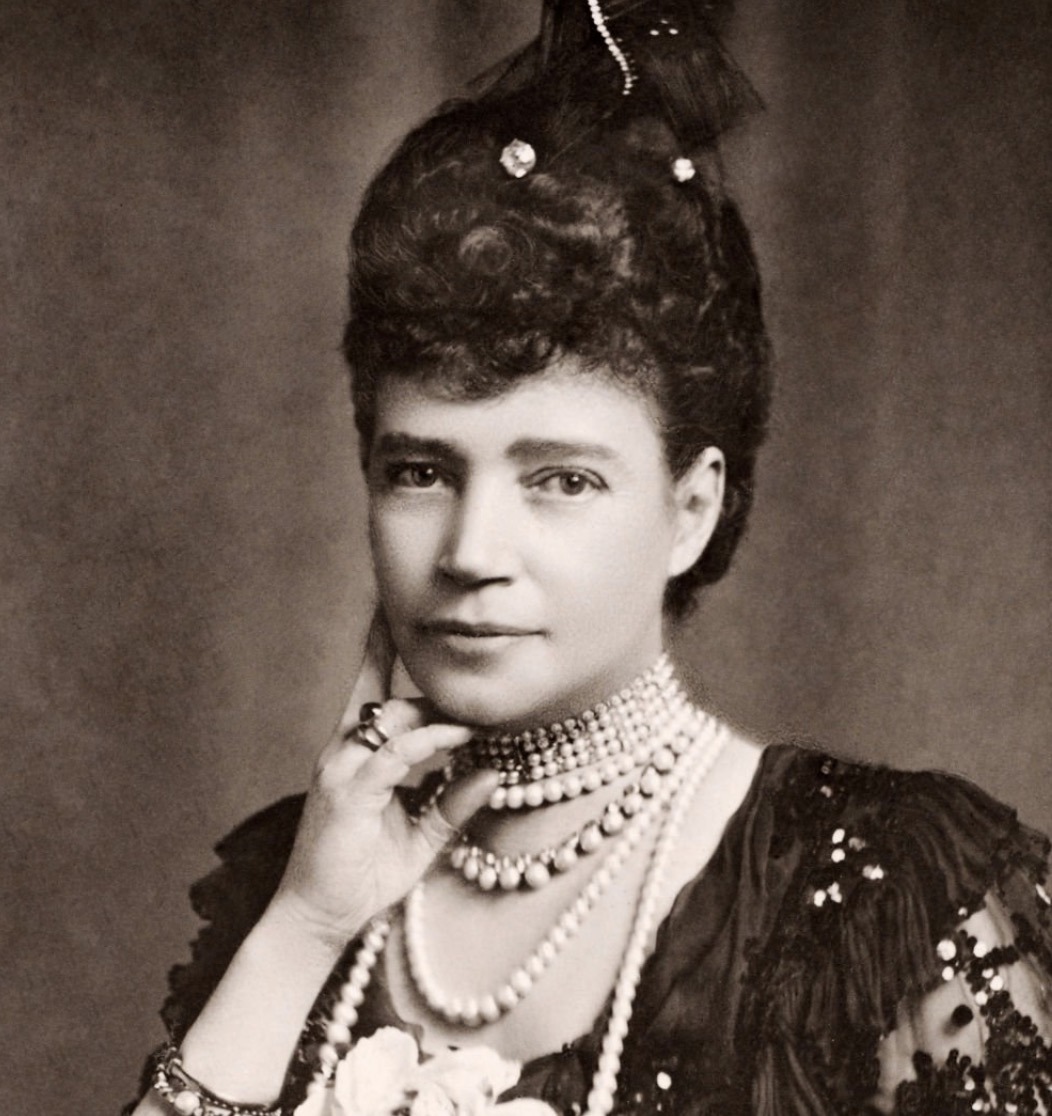Yesterday marked the 55th Anniversary of the Death of Princess Irina Alexandrovna of Russia, Princess Yusupov, who passed away in 1970! The only niece of the last Tsar who married the flamboyant wealthy Prince, and lived a tumultuous life in exile, we are featuring the striking Yusupov Cartier Rock Crystal Tiara!
Composed of carved rock crystal set in diamonds and platinum, the Tiara was made by Charles Jacqueau for Cartier in 1911.
This “icy” diamond tiara consists of platinum, carved rock crystal and diamonds in lines and small points like icicles, on top a gallery of diamonds. It is of incomparable subtlety and beauty, simply surmounted by a pure white diamond, It weighed 3,66 carats, but was perfect foil for the intimate scale, icy purity of this extraordinary jewel.

When Prince Felix Yusupov, son of Count Felix Felixovich Sumarokov-Elston and Princess Zinadina Yusupov, married Princess Irina Alexandrovna of Russia, daughter of Grand Duke Alexander Mikhailovich and Grand Duchess Xenia Alexandrovna of Russia, he acquired the Rock Crystal Tiara as a gift for his bride in early 1914.



Despite being the niece of the Tsar, Princess Irina was not eligible to wear the Court Dress and Imperial Regalia of Russian Grand Duchesses, instead wearing the Cartier Rock Crystal Tiara along with a Diamond Rivére made from diamond given by her uncle, the Tsar, as Prince Felix recalled:
Irina’s wedding dress was magnificent; it was of white satin embroidered in silver, with a long train. Her face veil, which had belonged to Marie Antoinette, was held by a tiara of rock crystal and diamonds.

Prince Felix recalled the Wedding Day at the Anichkov Palace:
On the wedding day, a coach drawn by four white horses brought my fiancee and her parents to the Anichkov Palace. My own entrance was much less impressive. The fusty old lift stopped halfway up to the chapel, and the whole Imperial family, including the Tsar, had to help to liberate the wretched bridegroom. Then, accompanied by my parents, I walked through several rooms already filled with people to the chapel where I awaited the arrival of Irina.
The bride entered on the Tsar’s arm; he led her to her place next to mine and the service began.
It is customary at Russian marriages for one of the priests to spread a carpet of pink silk before the bridal couple across which, in the course of the ceremony, they have to walk. Tradition has it that whoever first sets foot on this carpet will rule the household; Irina had made up her mind to do this, but she caught her foot in her train and I took advantage of this to forestall her.
When the service was over we walked in procession to one of the reception rooms to receive the customary congratulations. For two hours the guests filed past us; Irina was worn out. We then went to the Moika, preceded by our parents, who waited for us at the foot of the staircase to offer us the traditional bread and salt. We were then congratulated by all our servants. After this the same ceremony took place all over again at the Grand Duke Alexander’s palace.
The time for our departure arrived at last; a crowd of relatives and friends were waiting at the station. Once more we had to shake hands and be congratulated. After the last demonstrations of affection were over, we entered our coach; a black nose suddenly emerged from a profusion of flowers; and there was my Punch triumphantly ensconced among the roses.


During their honeymoon in Paris, the Prince and Princess Yusopov had numerous Family Heirlooms from both the Romanovs and Yusopovs reset at Cartier and Chaumet, with the Parures worn by Princess Irina during the London Season before the outbreak of the First World War, when they returned to Russia, making a close escape after being detained by the Kaiser in Berlin.

During the Russian Revolution, Prince Felix Yusupov was entrusted with hiding not only the magnificent Yusopov Family Jewels but also the collection of his mother-in-law, Grand Duchess Xenia Alexandrovna, which were hidden underneath a staircase at the Yusopov Palace in Moscow. While the Prince and Princess Yusopov fled Russia with several historic stones and jewels, the Tiaras were not among them.



The treasure remained hidden until 1925, when workmen repairing the Palace discovered the Jewels underneath the staircase, which consisted of 13 tiaras, 25 necklaces and 250 brooches, all of which were filmed and photographed when being dismantled by the Bolsheviks, with the metals melted down while the stones were sold abroad. The Cartier Rock Crystal Tiara was also pictured and is thus lost to history.


















